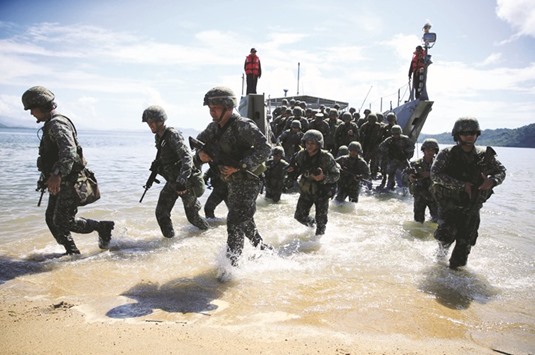Filipino and American troops yesterday simulated relief operations in the wake of a supertyphoon scenario, highlighting the focus of this year’s Balikatan exercises on disaster response as the usual territorial defence manoeuvres took a back seat.
The shift was on orders of President Duterte, who earlier directed the scrapping of the Balikatan exercises but later relented, Philippine Daily Inquirer reported.
The Balikatan is part of a Mutual Defence Treaty between the two countries signed in 1951.
“The military is always dictated by the guidance of political leaders and we comply with that,” the Armed Forces of the Philippines spokesperson, Brig. Gen. Restituto Padilla, said on the sidelines of the event.
This year’s Balikatan involved about 5,000 troops (2,800 Filipino and 2,600 American), fewer than some 9,000 American and Filipino soldiers who took part in exercises last year.
“It turned out this Balikatan is a little smaller, two-third of size compared to last year … but there is no policy that says that it will be small,” said Brig. Gen. John Jansen, commander of US Joint Task Force.
Barangay Dibacong in Casiguran, the venue of the main event for the joint drills, was supposedly hit by a super typhoon and there was no other way to bring relief to residents but by air and sea.
The Philippine Navy’s biggest ship, the BRP Tarlac, was used as a supply vessel and ferried troops for the event dubbed “Civil Military Activities from the Sea.” The Philippines also used its Huey helicopters.
The US forces used V-22 Osprey and UH-60 Black Hawk choppers for the insertion of troops and casualty evacuation. They also used the USNS Sacagaewa, a cargo ship, to ferry personnel and relief supplies.
The troops also sponsored a medical and dental mission, and taught residents expedient water collection and purification, health and safety management and other topics related to calamities.

Filipino soldiers disembark from the landing ship before they dock at Motiong Beach, as part of the Humanitarian Assistance and Disaster Response scenario during the annual Balikatan (Shoulder-to-Shoulder) exercises in Casiguran, yesterday.


